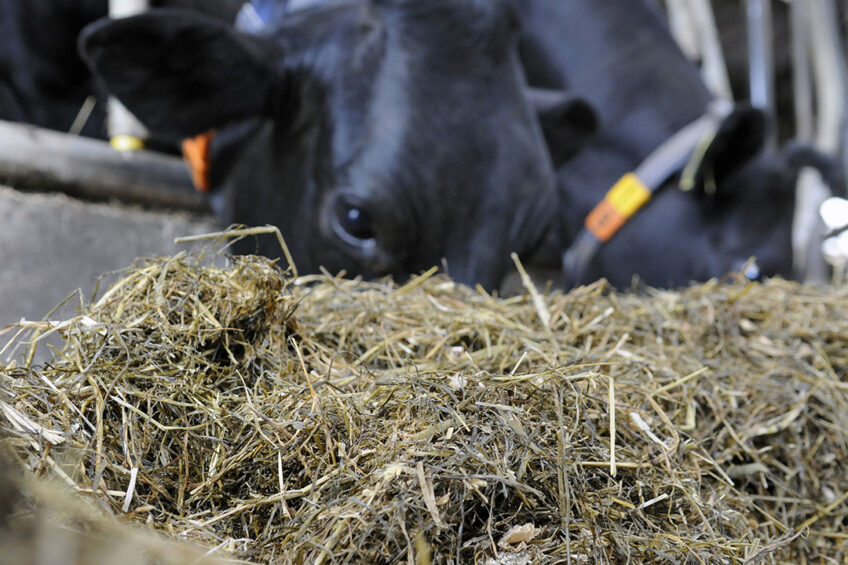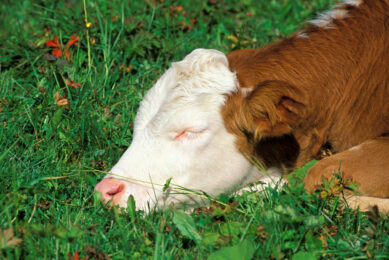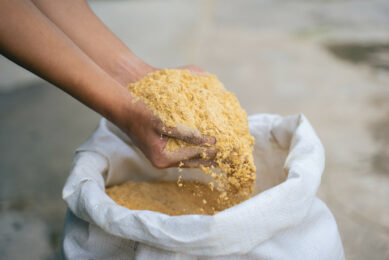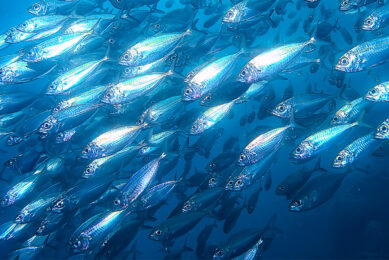Silage-making: Food for thought

Several factors and strategies can be adopted to gain better control of silage problems and achieve a high-quality product and better animal performance.
While almost all crops can be conserved as silage, the intake and nutritive value of the final product may vary depending on crop characteristics, silo type, and the management of the silage-making process.
Maize – most suitable
Maize is regarded as the most suitable cereal crop to use for silage. The crop is relatively high in dry matter (DM) content, low in buffering capacity, and has an adequate level of water soluble carbohydrates (WSC). Also, the microbial population in maize plants is high (107 CFU/g compared to 100 CFU for most plant species).
Sorghum – lower feeding value
While grain sorghum is suitable for ensilage due to favourable composition factors and greater ability to recover from drought than maize, it is slightly lower in feeding value because of its lower grain-to-forage ratio, high moisture content, and higher percentage of undigested grain and stalks.
Wheat, barley & oats
Wheat and barley can be ensiled at relatively immature growth stages when the grains are in the soft-dough stage, and the crops should contain about 35% dry matter with about a 300 g/kg WSC level. Oats are also often used for silage but may accumulate a potentially toxic amount of nitrates if planted on fields with less favourable moisture conditions.
Legume silages
Legume silages do not always undergo normal fermentation because of a variety of factors such as their high buffering capacity, which makes the attainment of a low pH even more difficult, in addition to their low WSC and DM levels. Generally, harvesting at the first bloom is recommended. This favours all the composition factors associated with maturity and results in greater conservation returns.
Grass species as silage
Grass species such as ryegrass, perennial grass, cocksfoot, and fescue are also crops commonly conserved as silage. Fructans are the only important WSC present in grasses and appear to be more abundant in stems than in leaves. This may explain the difficulty of ensiling young, leafy grasses as compared to stemmy grasses of the same species. Harvesting grasses at advanced maturity is a recommended practice because of the increased ratio of stem-to-leaves and the subsequent increase in DM and WSC levels.
Tower silos, plastic bags and oil drums
Tower silos are often used on medium to large-sized farms in areas where the climate offers reasonable conditions for field wilting. The cost of the tower and its filling and unloading equipment must be financially justified. A reduction in nutrient losses, improved animal performance resulting from enhanced storage efficiency and a more mechanised feeding system make this system profitable.
New methods of storage include the use of plastic bags, which can be located where desired but are more difficult to fill. Oil drums may be used for making silage but, because of their limited capacity, the silage is often used to feed sheep kept for feeding experiments.
Silage additives
The use of freeze-dried preparations of Lactic acid bacteria as a silage additive is an effective means of maintaining stable fermentation, particularly with crops that have a high WSC content. For crops with low WSC, such as alfalfa, the addition of simple sugars such as glucose and fructose with the inoculant may ensure a desirable fermentation. In terms of animal performance, positive effects were reported such as increased fat-corrected milk production and silage nitrogen retention, probably as a result of increased intake, increased digestibility, or improved protein quality due to the lysine excreting property of bacterial inoculates.
Enzymes can increase the capacity of forage crops by degrading carbohydrates, providing substrates for the fermentation process, and increasing digestibility. In one study, cellulose enzymes were added at 0.7 kg/tonne to the forage portion of dairy diets 100 days post-partum with a resulting increase in feed efficiency and milk production. In mid-lactation, such responses required more enzymes. At such high enzyme concentrations, however, the cost of enzyme application may limit its potential at farm levels.
Urea is usually added at 4-7 kg/tonne to crops with low protein content, such as maize. The large amount of readily fermentable carbohydrates in maize also allows better utilisation of the degradable urea nitrogen in the rumen of cattle or sheep. Thus, the crop and the additive complement each other favourably when combined to form urea-treated silage. Supplementary crude protein can be reduced in this case, suggesting an economic benefit.
Aerobic deterioration
Air is the most important factor affecting silage fermentation. This factor exerts its influence through the activities of aerobic microorganisms such as bacteria, yeast, and aerobic fungi. The microorganisms act altogether to lower the nutritive value of silage by altering its chemical and physical characteristics. Many of these problems may be alleviated through fine chopping, rapid filling and sufficient sealing of the silo, as well as the use of silage additives to improve aerobic stability and prevent heating and DM losses.
Silage intake
The presence of fermentation end products, such as organic acids, ammonia, and amides may limit the intake of silage either through reduced palatability or inhibition of gastrointestinal motility. In one study, it was found that the voluntary intake of 87 silages by sheep was on average 33% lower than that of the fresh grasses and legumes from which the silages were made.
Physical problems such as gum injury (gingivitis) may also be associated with reduced feed intake. This problem is often noted with silage made of potatoes contaminated with soil materials (e.g. sand) at harvest which, when in contact with the gum, cause gingivitis. When the crop is thoroughly washed and dried before ensilage, this problem can be alleviated.
Silage digestibility
The concentration of digestible nutrients in silage depends more on the stage of growth at which the fresh crops have been harvested and may have nothing to do with the silage-making process. The effect of the growth stage on digestibility is mediated largely by the increased lignin content of plants as they are allowed to grow further. However, because of the increased yield of most plant species at such advanced stages of growth, the choice here should then be made based on the relative importance attached to the yield on the one hand and to the concentration of the digestible nutrients on the other.
Silage-related disease and parasites
Ketosis has been observed with animals fed silage undergoing aerobic deterioration or clostridia activities due to the disruption of the volatile fatty acids (VFA) formation in the rumen. The condition is characterised by reduced rumen motility and feed intake, resulting in a drop in milk production and body weight. Infected animals may be drenched with 30 g of chloral hydrate dissolved in 0.5 litres of water to improve the absorption of glucose and correct the VFA ratio in the rumen.
With silages that have large amounts of non-protein nitrogen formed during fermentation, there is often an increased level of blood ammonia in animals, which adversely affects the acid-base balance in their bodies. This is particularly true in animals with viral or parasitic problems in their liver, making them unable to dispose of the surplus ammonia. In these cases, such poorly preserved silages should be withdrawn or fed in restricted amounts.
Feeding of grass silage contaminated with plant species such as ragwort (Senecio jacobaeu) may result in fatal poisoning. Cattle are especially susceptible, which often leads to death 2-4 months after the last mouthful.
The introduction of oxygen to ensiled forage through poor consolidation, inadequate sealing, and/or poor feed‐out management may favour the survival and viability of liver fluke (Fasciola hepatica) which can infect sheep, cattle, and other animal species, causing haemorrhage, anaemia, impaired liver function, reduced growth rate and milk yield, and carcass condemnation. With proper pre-ensiled forage management, adequate forage wilting, the use of additives to control aerobic spoilage, and the provision of anaerobic sealing, liver fluke problems can be minimised.











